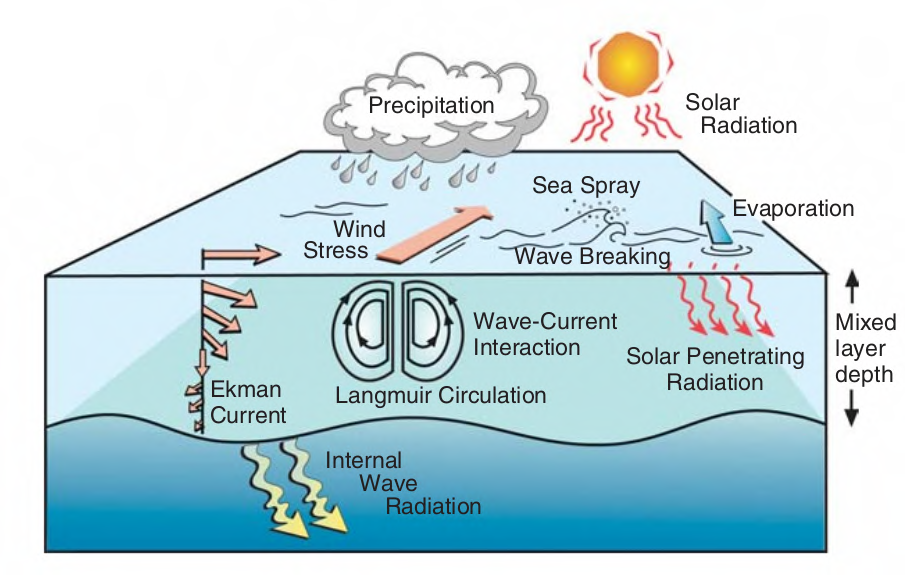Research
 |
|---|
| From Wells, N. C. (2011). The atmosphere and ocean: a physical introduction. John Wiley & Sons. |
The air-sea exchange at the oceanatmospheric interface is one of the major drivers behind ocean circulations spanning over a wide range of length scales. The ocean receives momentum, heat, and freshwater fluxes from the atmosphere through this exchange process. Wind shear transfers momentum flux into the ocean, while heating/cooling and evaporation/precipitation drive buoyancy flux from or into the ocean. These fluxes cause upper ocean turbulence and mixing (see figure), which modulate boundary layer and ocean-atmospheric interface properties (like mixed layer depth, sea surface temperature etc.). Thus, an urgent need is to understand this upper ocean mixing to precisely predict its response in a rapidly changing climate.
However, accurately quantifying small-scale turbulent fluxes of tracers and momentum is difficult due to lack of high-resolution spatiotemporal ocean observations and biases of various turbulence parameterizations, used in ocean models. My current research involves investigating the role of buoyancy and convection in determining upper ocean turbulence and mixing.
